“I always come back.” Fateful words spoken by William Afton, The Terminator (the good one) flared leg jeans, high rise trousers, and as fashion has shown us, a myriad of other garments, details, and overall styles. In that way, fashion is cyclical. And by extension, so is classic menswear!
Classic menswear, despite its attempts to position itself as a steadfast rock in the sea of time, has had its history marked with distinct details and trends. What’s interesting is not that there happens to be discernible characteristics from each decade to decade, but the fact that a few of the details and overall stylings are quite reminiscent or in some cases, straight revivals of what came before. This element is obviously helpful in determining the era a garment is from, but as time goes on, its also a boon for simply gaining awareness and even appreciation for those details, some of which may not currently be offered in our immediate area.
This is because the garments and the details therein that we connect with and choose to bring back and send up (or subvert) are ways we connect with the world. Thinking about this stuff isn’t meant to find a catch-all answer to culture (W. David Marx already solved this in his book), but simply an invitation for us to potentially learn more about ourselves and what we happen to enjoy.
I find this whole thing incredibly fascinating, especially as someone who dresses mainly in pursuit of a POV rather than straight formality or Occasion. I think that the myriad of expressiveness and interest in details/styles spanning decades is a positive example of how we’re in the best time for fashion. And for those who fancy themselves a historian and sociologist (this happens when you collect/wear vintage clothing for a long time), it can simply be a fun exercise to see what has come back, why it happens, and how we can leverage it all in pursuit of our Personal Style.



First off, having an understanding of how menswear has changed as well as the similarities between certain eras is quite an important thing to be aware of. This is because it gives you an eye for details across design, silhouette, and proportion, turning every garment, genre, and even a specific outfit into a combination of discernable references. In other words, it’s a great case study in achieving Menswear Abed-Brain where everything starts to remind you of something, giving you the power to leverage them for intentionality.
I’m sure some of you know this stuff already, but here’s a general list of “revivals” that I’ve noticed (with my amateur mind). Things are indeed vague but I definitely feel like there is something there that marks a thematic connection.
- Elements of the 1960s-1970s call to mind:
- 1910s-1920s novelty garments through ulster collars and multiple rows of buttons on jackets
- 1930s collegiate style tailoring with structured shoulders, nipped waists, and flared trousers.
- It’s also clear that certain ties and shirt patterns have referenced the 1930s.
- You should read THIS article for more.
- Elements of the 1980s-1990s call to mind:
- Bold looks of the 1940s-1950s thanks to broad shoulders, wide legged trousers, pleats, point collars (sometimes spearpoints!), and abstract ties.
- Elements of the late 2000s-2010s call to mind:
- 1960s styling due to slim suits and ties (knits, solids, and stripes rather than foulards.
- Elements of the 2020s call to mind:
- 1970s styles thanks to structured and sexy suits foom Husbands, Factors, Gucci and more including simply wearing true vintage.
- 1980s/90s-does-1940s/50s with slouchy suits from various designers like Dries as well as a rise in wearing true-vintage.
- There’s also a general vintage mood from the current period’s casual style that mixes elements from actual period looks from various elements from the 50s-Y2K
- This includes 50s sportshirts, knit polos, skatewear (like dickies or double-knees), vintage tees, workwear jackets, and more.


It’s important to note that these Revivals, especially pre 2020s, tend to be designers and brands taking reference or inspiration from previous decades rather than a verbatim copy.
For example, the 1970s definitely sends up collegiate 1930s suits with their general silhouette as well as their appreciation with action backs and big patch pockets with pleats. But its not all exactly the same, and I’m not just talking about material. When you look closely, you’ll see that the lapels have more of a straighter edge and the jacket has a longer length, both of which provide more of a dramatic figure than the 1930s; the flared legs are tighter around the thigh. The 70s also tends to make their back belts wider than their 30s counterparts, no doubt because everything in the 70s was bigger (just look at the pocket flaps).
The 90s are also not quite the 40s/50s thanks to a change in buttoning point and a different lapel shape (narrower width with a lower gorge) among other things. Even though late aughts-2010s suits were inspired by 1960s/Mad Men, the design (like buttoning point or grade of taper) deviates enough to generate its own vibe. This discernible element of “modernity” is why we can clock a garment as 70s-does-30s or 2010-does-1965. In that way, it also marks it fun to evaluate a garment as a myriad of POVs, be it vintage or modern, to create something that is “itself”.
But while designers from all eras always look to the past and change it, we’ve definitely seen a rise in the pursuit of true vintage pieces or reproductions. Hell, we’ve also seen a rise of straight redos, where whole outfits are actually lifted verbatim from the past verbatim. For a while, this was mainly done within subcultures like swing dancers or musicians, but at this point, it’s becoming more and more common to be done simply for the look (or “-core”). It’s also interesting to point out that these Verbatim Looks are no longer multiple decades away from our current setting. As I shared in the outline above, we currently see elements from the 80s or 90s in menswear; when it comes to fashion at large, Gen Z has already moved onto Y2K.

With that in mind, it can be hard not to notice that many of these Revivals, especially the ones that have come up since the invention of social media, are rooted in an idealistic version of the target era’s Zeitgeist. For example, the current 70s mood of contemporary menswear doesn’t look like a 70s professor (think The Holdovers) but rather something sexy like young Robert Redford wearing a suit and shirt but sans tie. Not everyone dressed like Robert Redford back then, but when we send up the 70s today, his vibe is what we tend to go for.
It’s never the “regular” looks, but ones we find the “coolest”. This makes sense when you remember that the people, especially youth, who send up and revive Past Vibes are only tangentially related to the target era. It’s obvious they’re going to pick the easiest and most noticeable touch point that provides escapism and aspiration. I’ve come to realize that I’m just as guilty of this as the next guy, seeing that my love of Golden Era stylings still points toward the Esquire Man, which isn’t exactly what everyone was wearing back then (outside of Hollywood).
But while most idealization focuses on the celebrities (Jimmy Stewart, Brad Pitt in the 90s) and prominent designers (90s Prada or Armani, 70s Nutter,) of an era, this has since expanded to subcultures through a historical lens, like reviving 90s skate scene, 50s western themes, or Y2K hip hop and rave culture. Perhaps when the late oughts and 2010s no doubt come back again, I’m sure we’ll see reduxes of hipster suits and swag culture rather than plaid shorts and “retro” brand tees you’d get from Target.
Despite all of this, Menswear’s Revivals will always have a sense of modernity to them, tying each redux to the “current” era that was looking to the past. Even though the 70s did the 30s, people did not look like Clark Gable. The same can be said today, even through the myriad of Revivals and Reduxes that shape our understanding of 2020s fashion. This is simply due to having a “modern face” or when they incorporate zeitgeist-coded pieces like certain footwear (shoes have definitely changed over the years, but casual choices are certainly more discernible), eyewear, and hairstyle.
Ultimately, this idea makes the discussion around Revivals become more than just noticing aesthetic details and the similarities between decades. It’s now about the “why” behind the decision to resurrect something from the past.
Obviously, people have always worn old clothing. You can find photos of people wearing 1920s clothing well into the 1940s. People would alter their existing clothing to fit current trends, like narrowing their trousers or the crazy move turning a DB into an SB when DBs fell out of favor. But this isn’t nostalgia– this is people simply making the most out of what they had (and for good reason, as good clothing is expensive). Intentionally reviving things from the past out of enjoyment or expression is something else entirely.
To me, the answer lies in Nostalgia.


For the purposes of this blog post, I define Nostalgia as an interest for things past that we may or may not have tangibly experienced.
This obviously isn’t new. . Art has had many revivals periods, either from straight verbatim repros or by achieving a general nostalgic vibe. I’m reminded of the Pre-Raphaelites who in the 1850s made a return to styles, well, pre-Raphael. Music obviously has done the same thing, like how Bruno Mars blended the iconic elements of 70s R&B, soul, and funk that resulted in a firmly 2020s does 1970s sound. Movies and TV shows, a medium that combines the visual with music, is quite a powerhouse in generating Nostalgia. And it can be fun to see the correlations when it comes to movies and Revivalist fashion.
Vintage fashion enthusiasts know that the 1970s takes many cues from the flared suits advertised to 30s youth. It’s not a straight reproduction, but the thematic throughline is there. In broad strokes, it can simply be seen as a reaction against the trim silhouettes of the 1960s; the 70s just wanted more drama and sex appeal. However, we also can’t deny that the early 1970s in general had some nostalgia for the 1930s, at least according to vintage enthusiasts in The Fedora Lounge. They tell us simply to look at films released during that time, such as Chinatown, The Great Gatsby (1974), The Sting, and Bonnie & Clyde. Maybe the 1970s in general had a 30s mood!
Could the late 80s and 90s have had a similar sentiment that resulted in their fashion being quite similar to late 40s and 50s? This article from the 90s might be onto something! Of course, it’s common knowledge that our minimalistic and slim fit suits was no doubt spurred on by Mad Men and that our quick 80s movement (found more in general fashion) probably is due to Stranger Things.


However, it goes without saying that period pieces aren’t the only way to get vintage inspiration anymore. Thanks to the internet, we can access the past at the touch of a button. This could be in terms of vintage art/movies/photos or even the clothes themselves, bypassing the traditional instigators of Nostalgia all together. We can simply discover old clothes and like them on their own merit. But I realize that this might not be the case every time, especially since clothes will always be tied to a certain vibe.
That’s why we can’t ignore how modern social media gives us a way for us to create a nostalgic vibe in an unprecedented way. Our vintage attire (online) no longer has to just be expressed through a photo and caption. Our Revivalist outfits can now be viewed with period music and filters mimicking old footage, making the entire expression more cohesive, adding ourselves to the myriad of vintage inspiration on the internet. Hell, just doing a fitcheck of a vintage-inspired fit with period music does a lot in providing a “context” to your outfit. It’s Cinematic Dressing with an emphasis on Cinema (or tiktok).
With the internet and its algorithms to create a positive feedback of content deemed popular, it effectively becomes a Nostalgia Generating Machine, perpetuating the aforementioned zeitgeist-summation of a particular era. People are able to see a variety of expressions from the past, whether they were around to see it or not, allowing them to reference, revive, and send up styles to the degree of their choosing. One might wonder what the future of culture looks like with this constant cannibalization of the past; it may be static or even “done”.
But as dystopian as this might sound, I actually find something positive from this. Yes, the fact that Menswear is destined to constantly Revivals is bound to inundate us with a plethora of potentially exhausting options to dress like. For me however, this is simply a way for us to expand our knowledge of details and expression and ultimately serve as an invitation to find what we truly enjoy.

Nostalgia in clothing (wearing vintage, doing a vintage style) is interesting because it is an external activity, serving an outwardly expressive medium for your cultural interests (and maybe aspirations?).
In other words, being aware of Revivals allows us to dress “like” what we enjoy. We can dress like the 70s because we enjoy its music. If you like writing music, you may take some cues from the eras from your favorite composers. An enjoyer of 90s films may feel kinship with all of those Night Openings. Nostalgia for culture can provide us with a great prompt for our attire. Wearing such outfits is a great way to “hang out” with the eras we enjoy and in our own little way, keep that spirit alive.
Hanging out with the eras you’re Nostalgic for may even help you understand it a bit better, providing context behind a period’s aesthetic details and stylings. It can be easy to write off the 70s as a polyester knock off of the 1930s. But once you see how the 70s approached the look as well as why they augmented what they did (the 70s were sexy, so why not make the clothing sexy?), it can assist you with developing an understanding or even kinship of those details. And while no one is required to keep things period accurate, I wouldn’t be surprised if someone can start to see just why certain details are often worn together.
Because as much as we’d like to look at clothes as agnostic garments, they will always be tied to the era that they are from, containing connotations to art and culture. Of course, this may tempt you to have a large wardrobe of distinct period pieces for you to wear based on your mood. And while there is nothing inherently wrong with that, I will always prefer to do my best to have one wardrobe that allows me to express everything that I enjoy.

Ultimately, being aware of Menswear Revivals has assisted me with understanding the aesthetic potential of a garment to express different aesthetics. After all, I don’t really like buying too many clothes; being aware of details and Revivals is a great way for me to reign in potential purchases and evaluate them accordingly.
This is why I’ve mainly purchased Ring Jacket or Brooks Bros. Sacks because they remind me of jackets from the 1930s as well as ivy from the 1960s (an obvious case in the latter). Some 3 button jackets from the 90s are also quite similar, if not a bit more 40s coded (that’s fine with me). Thrifted 90s shirts are quite similar to 30s spearpoints. My thrifted pleated trousers from the 1980s/90s help me dress like a 1930s/40s Esquire Man without a separate wardrobe.
On that note, my wide-cut suits give me the option to dress either 80s/90s or 30s/40s based on my mood. My 1930’s ties and their crazy brocades can help reference the 1970s without resorting to polyester. On the flip side, some of my modern ties from Drake’s and Tie Your Tie are coded as the 1930s, the 1990s, as well as a bit of a contemporary take due their patterns.
This exercise ultimately means that everything is fair game: contemporary designer/maker, vintage/second-hand, or repro. Aesthetic Potential allows me to not only guide my purchases but to also add to the thematic (read: taste) continuity of my wardrobe. The ultimate choice of how I style these garments together and what the resultant POV is simply is based on which facet of myself that I want to express. Some of it may be details for details sake, such as Esquire Man, but some of it can be about connecting details with culture that I may or may not have experienced myself, such as leveraging the 70s when I feel like Going Out.

In conclusion, I have a lot to owe to Menswear Revivals and the inspiration-generating aspects of Nostalgia…even if I never experienced it myself. My whole approach to clothing has been a result of it, allowing me to get exposed to culture outside of what was in my immediate context. I’ve always recognized that I was in a cultural bubble due to attending niche Christian education for my entire life (K-MBA) and largely being around Asian-American friends and family. As a result, a knowledge of expression and details were quite foreign to me…until I started looking at the past.
Understanding details and how they come back/are similar to other eras, was quite helpful in achieving a specific era’s look, without necessarily buying items solely from that time. But over time, it provided me with a general recognition for a variety of details that weren’t just from the Golden Era. But of course, old photos and movies are still quite separate. It wasn’t until I recognized people today doing variations of Revivals that I was able to build on that appreciation and form a true kinship with details and expressions independent of era. In other words, Nostalgia helped me learn that I wasn’t just about dressing for a period, but that I was simply in pursuit of “Ethan Style”.
That being said, it can be quite tempting to have a critical view on this whole topic. It’s not hard to see nostalgia/revivals as a way to mine the past for a niche thing to resurrect in order to gain status. You could argue that the vintage industry was birthed from that idea; we’ve also seen it shift from heritage made garments to archival designer pieces as a way to show taste and effort. But I don’t think this has to be the case.
I’d argue that nostalgia can stem from and even generate a wholesome appreciation of specific aesthetics that simply may no longer be easily found because overall society hasn’t deemed them profitable or relevant. Wearing older pieces or even Reviving/Remixing an anachronistic look can be a form of rebellion against being forced on us mall/mass-market stores as well as what is desirable among the “in-crowd”.
Granted, this will always be based on how much your taste may or may not deviate from “the norm”. It will also be quite interesting as we continue to see the rise of Nostalgia based brands (like Bryceland’s, RRL, Scott Fraser, Husbands), be they designer or repro, which provides us with more avenues to dress the way we want to. Modern brand Buck Mason made it a big deal when they repro-ed Eddie Bauer. Heritage brands like J. Press have even sold vintage in order to show that they too have an appreciation for their past. This is indeed the best time for fashion!
This doesn’t necessarily mean we have to buy everything in order to keep up with the nostalgia cycles. To me, this should serve as an invitation to have a critical eye across Menswear and understand it as a case study of details and expressions that repeat and revive to various degrees across time. Even if the exercise is constantly on-going (just as fashion isn’t quite as “finished” as others may say), it will only help you develop your taste and executional methods with clothing and style.
That way it doesn’t matter what era is currently “in” or not; you’ll be able to find the garments that express the vibe that you want. You have all of the menswear to help you out!
[End of blog post.]
Podcast Outline
- 6:48 – Topic Start/Always Looking to Past Fashion
- 11:32 – Clothes Would be Worn Over a Long Period of Time
- 18:49 – Revivals are Never Just an Exact Callback
- 25:54 – Today is a Ripe Time for Revivals
- 41:10 – Inspiration Sources
- 48:00 – Eras Gauntlet
- 1:40:31 – Wrap-up
Recommended Reading
- The Birth of Vintage
- ’90s America Trying So Hard To Recreate Its Fantasy Of The ’50s From TV To Fashion
- From Tumblrcore to 2014core, the nostalgia loop is getting smaller and faster
- Understanding Fashion Cycles as a Social Choice
- An interesting scholarly article on the use of vintage/old trends.
- The Death of Thrifting
- While semi-related, this may be a good explanation to why people seek out specific pieces of vintage.
- The Fedora Lounge thread on how the 70s liked the 30s
- An article showing how Nostalgia guided some facets of fashion in the 1970s
- A history of the Teddy Boys who had a decidedly “retro”-meets-contemporary vibe in their attire.
- A dive into the Flapper Dress, which explains that the mainstream conception of Flapper attire is actually due to the 1950’s!
- Laver’s Law, A Timeline of Style Fashion History
- The Future of Nostalgia in Fashion — Strike Magazines
- How Tiktok Fuels Nostalgia
- How the Knit Polo Took Over Hollywood
- A good dive into how a very vintage-coded item gained popularity among celebrities and their stylists.
Big thanks to Spencer who helped find these articles!










\



























































































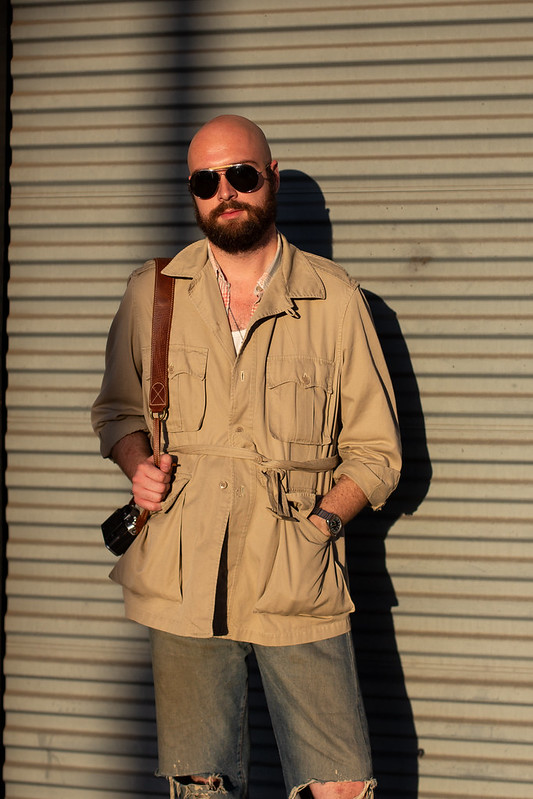





Don’t forget to support us on Patreon to get some extra content and access to our exclusive Discord. Oh and don’t forget, we do a podcast every two weeks!
Buh-bye!
Ethan M. Wong (follow me on IG)| StyleandDirection
The Podcast is produced by MJ.
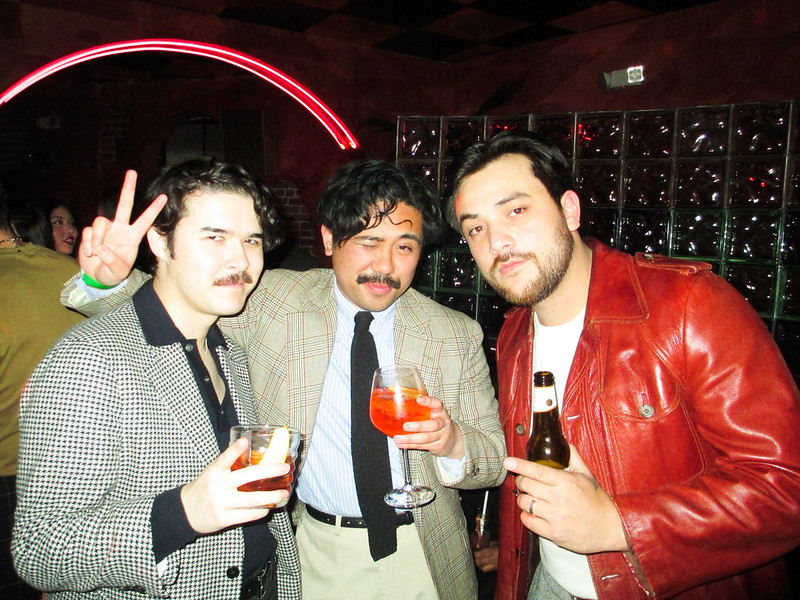


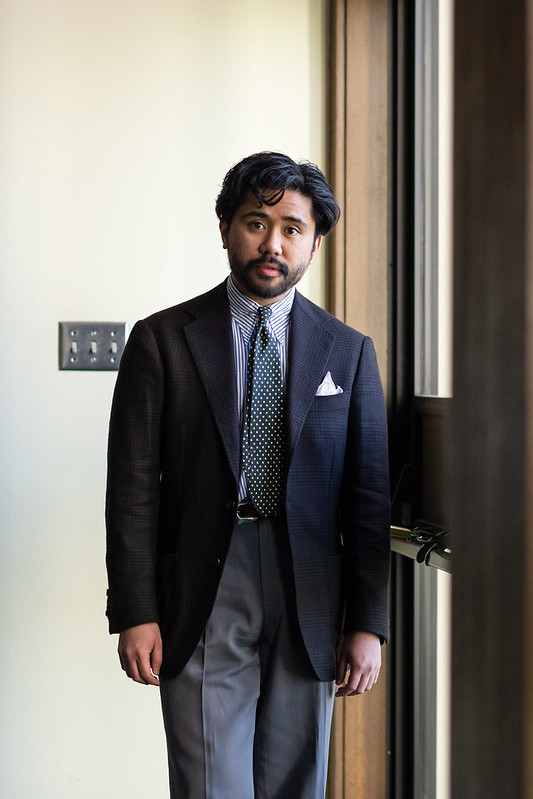





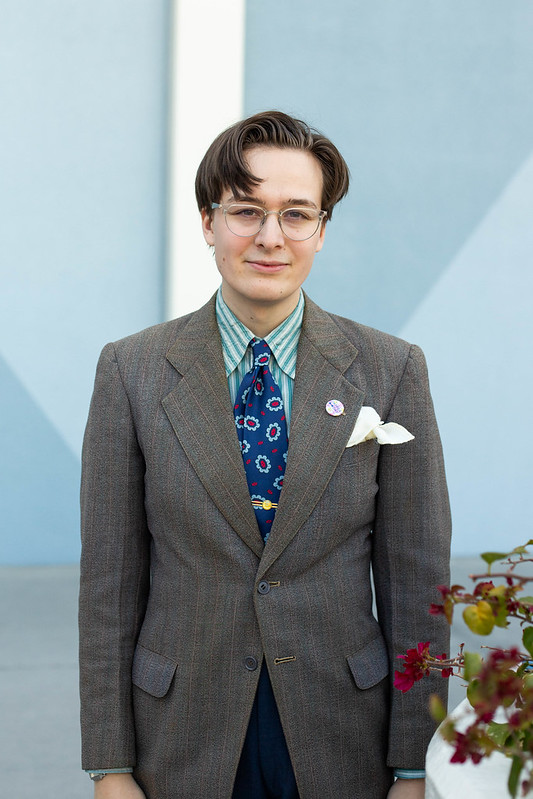





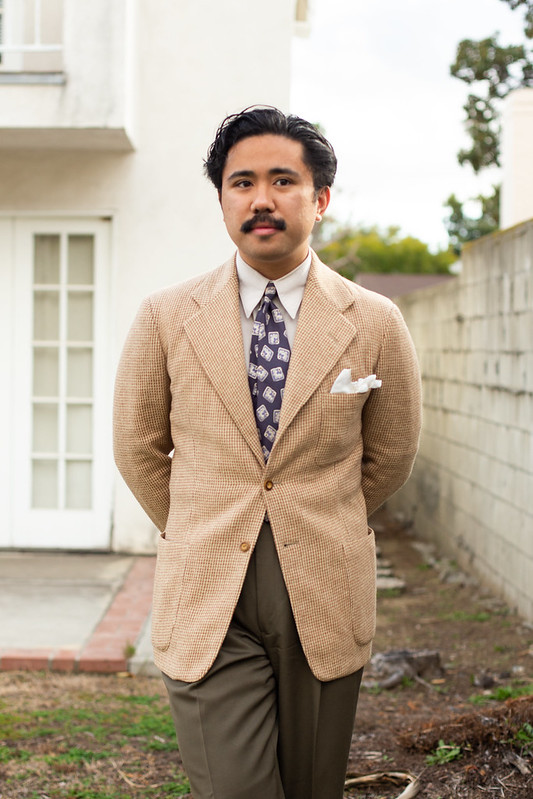

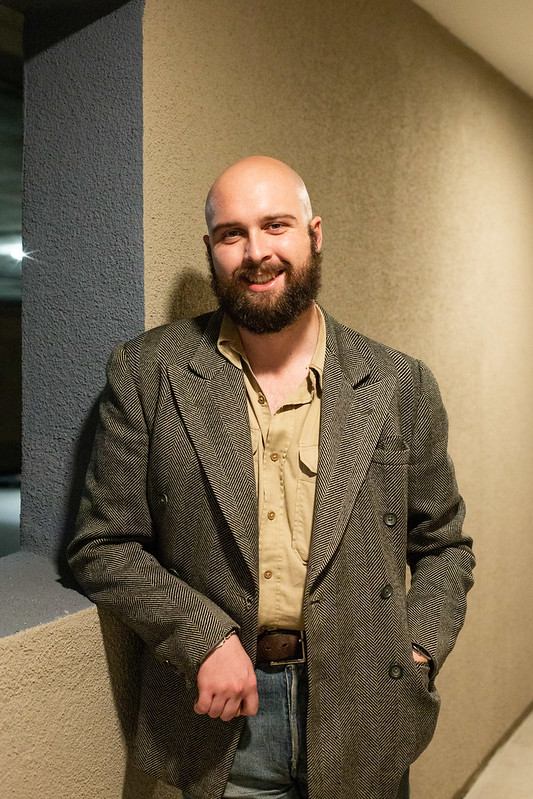






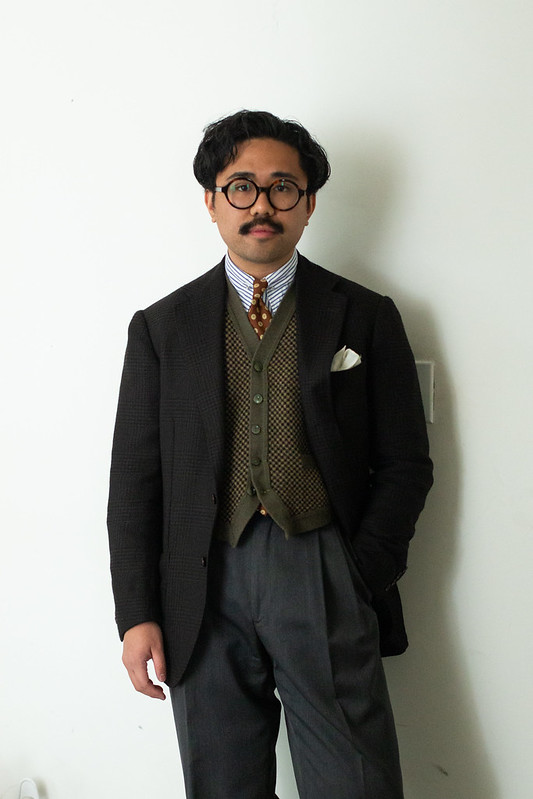











6 comments